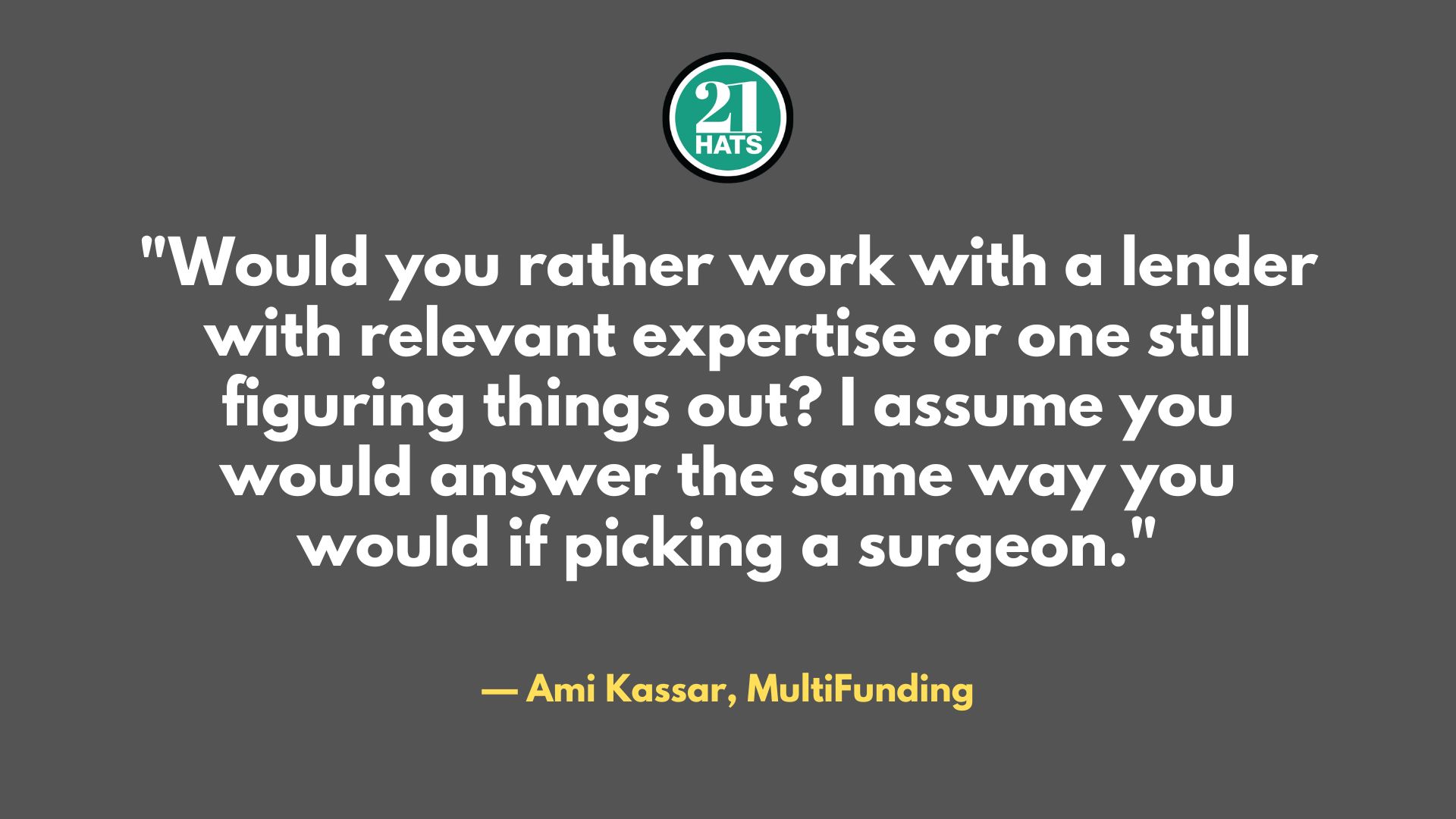The Art of Picking The Right SBA Lender

The top 100 SBA lenders are far from interchangeable. They come in many different shapes, sizes, and competencies. And they also come and go.
By Ami Kassar
A few weeks ago, I wrote about the SBA’s branding problem and how so many doors and channels in the program can lead to vastly different borrower experiences. I thought it would be interesting to dig a bit further and talk about how we at MultiFunding go through the process of choosing lenders for the various projects we work on. This is not a one-size-fits-all scenario. In fiscal year 2024, which ended on September 30, we funded 92 SBA 7(a) deals with 19 different lenders.
So, how do we pick the lenders? To understand this, it’s important to understand how the overall SBA market works. In fiscal 2024, 1,473 different lenders made SBA 7(a) loans, but the top 100 made 74.3 percent of all the loans by volume. So, if you were picking a lender to help you access a program with all kinds of rules and regulations, would you rather work with a lender with relevant expertise or one still figuring things out? I assume you would answer the same way you would if you were picking a surgeon. We always prefer to work with experienced lenders.
The top 100 SBA lenders are far from interchangeable. They come in many different shapes, sizes, and competencies. And they also come and go. Looking at this year’s top 100 lists, you will see 15 brand-new lenders. This happens because lenders’ credit appetites tend to change over time, especially in a market like the one we’re in now. We always look for lenders who are growing and try to avoid lenders who are curtailing their lending.
Lenders also tend to specialize in different size deals. The smallest average deal of a lender on the top 100 list is $113,257, and the largest is $2.6 million. Most of the lenders on the smaller end focus on small SBA Express loans; those on the larger end generally specialize in real estate transactions. You want to make sure your loan is at a shop that matches your needs. The top 100 lenders also have different lending geographies. Two of the top 100 lenders only lend in two states, while five lenders lend in all 51 states. The median number of states they lend in is 19. While at MultiFunding, it’s faster and more efficient for us to work with national lenders, sometimes there are specific reasons to pick a local or regional player.
Ninety-one of the top 100 lenders are FDIC-regulated banks, six are private lenders, and three are credit unions. Private lenders typically have less rate flexibility but will entertain riskier deals. FDIC-regulated banks also come in different shapes and sizes. The largest SBA lender has $3.5 trillion of assets, and the smallest has $160 Million. These are vastly different organizations. While we will typically gravitate to smaller banks, sometimes the bigger ones give better rates.
How do you access all of this information? While we have all of our own algorithms we use to sort through all of this, SBA data is publicly available here, and if you want to turn into a secret data geek like me, have at it!
Ami Kassar is CEO of MultiFunding.